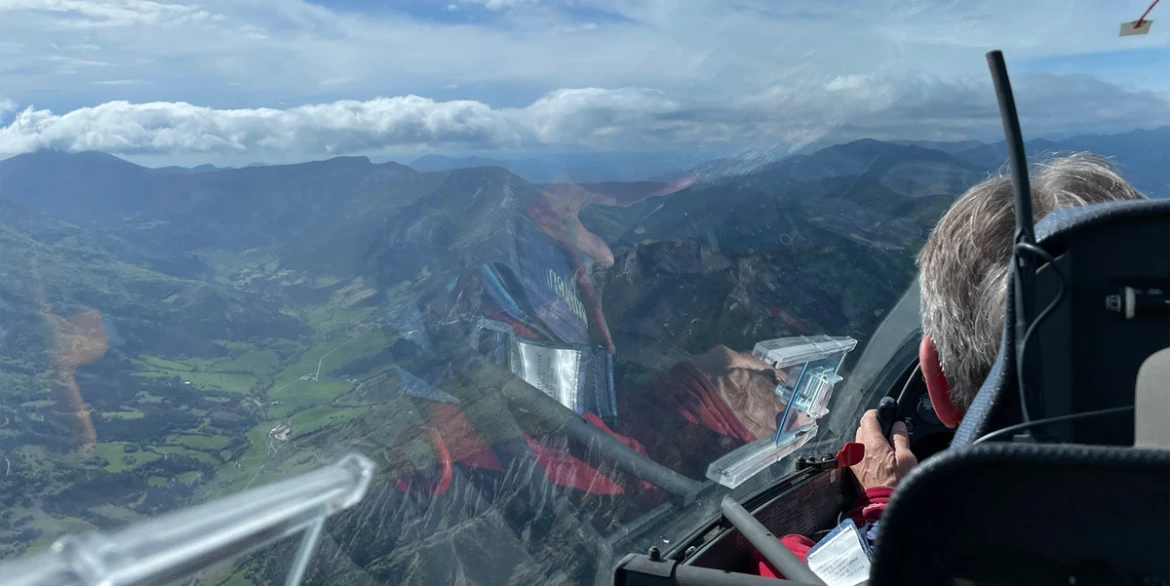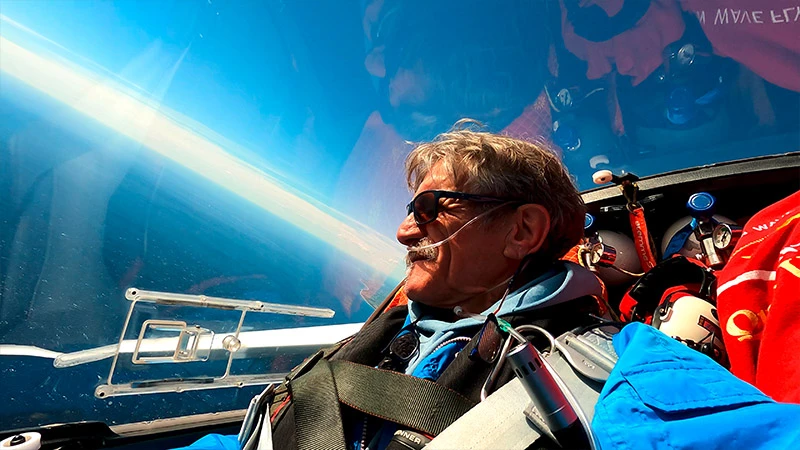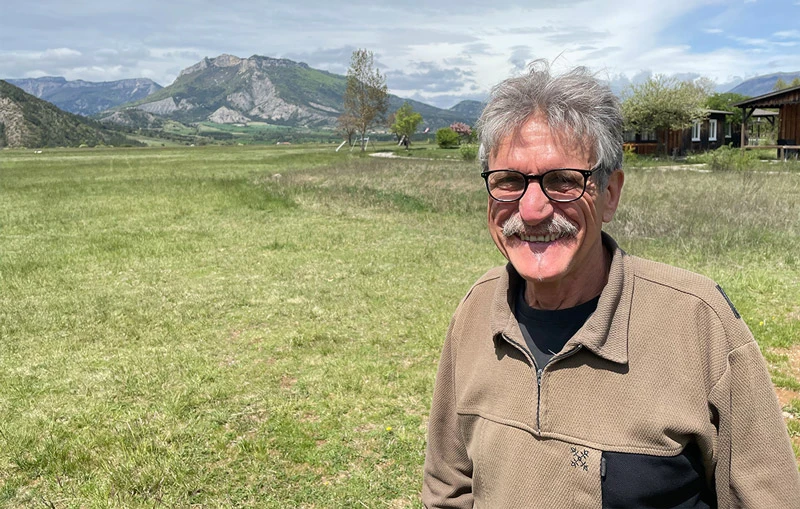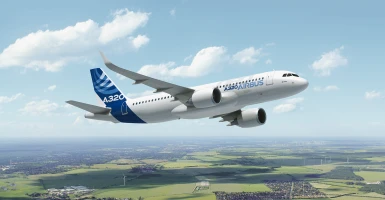aviation
Chasing records in a glider
While glider pilots consider flying in lee waves to be the ultimate challenge, these atmospheric oscillations can be dangerous for commercial aircraft.
author: Daniel Hautmann | 6 mins reading time published on: 06.07.2022
author:
Daniel Hautmann
is a freelance journalist. He flew gliders growing up, but has since developed a passion for surfing. Even though he now prefers the water, he devoted an entire book to the wind.

©Daniel Hautmann
Efficiency champions: Gliders achieve a glide ratio of 1:70, meaning that for each meter of descent, they can glide for up to 70 meters.
Silence. Heavenly silence. Only moments ago, turbulence shook the aircraft and lifted passengers out of their seats. The wings bent as the wingtips quivered in the wind. Howling and roaring. But, suddenly, above the clouds: silence.
“Now we’re in the wave,” pilot Klaus Ohlmann explains. But getting there was taxing. After all, the weather conditions in the southern French Alps on this day in May are anything but ideal for gliding: the clouds are low, the wind is weak and there is a risk of thunderstorms. But all that only seems to encourage Ohlmann, the record-breaking pilot. “This is my training,” he says. “Anyone can fly in good weather.”
And here is how he showcases the high art of flying: After a two-minute engine launch, his glider soars on the ridge upwind of the 1,000-meter-high Arambre in southern France, right next to the airfield. He keeps the aircraft very close to the cliff edge just above the trees. A slight ascent. Then he spirals upward, exploiting the thermal lift. At an altitude of 2,400 meters, Ohlmann finally hits the lee wave.
Lee waves form when the terrain, e.g. mountains, deflects the wind. This creates atmospheric oscillations. The stronger the wind and the higher the barrier, the higher the waves rise—sometimes up to 100 kilometers. It is these laminar flows that glider pilots surf.
Danger for commercial aircraft
Lee waves can be dangerous for commercial aircraft. The turbulence they cause can damage the aircraft and injure passengers. The waves can break—just like ocean waves at the beach. Maps or forecasts are not readily available yet. But this is set to change. The glider pilots in their research aircraft study the phenomenon and collect data.
To illustrate the nature of invisible currents, Ohlmann likes to take other pilots to a stream: “The water doesn’t just flow downstream, but whirls and forms swirls behind the rocks. Sometimes it flows in the opposite direction. Air behaves in much the same way.”

Gliding the wave: If a strong wind blows over an extensive mountain range, air waves can develop on the side facing away from the wind (leeward side), similar to the way water in a stream churns on the other side of an obstacle in the streambed. There the water doesn’t just flow downstream, but whirls and forms swirls behind the rocks. The same thing happens in the air: the stronger the wind and the higher the barrier, the higher the waves rise—sometimes up to 100 kilometers. Gliders can thus use the rising areas of these “lee waves” to climb to tremendous heights. Sharply defined, lenticular (lentil-shaped) clouds mark the wave crests.


©GRAHAMUK


©GRAHAMUK
Wave crests: Lee waves can often be recognized by special cloud formations that already visually indicate a wave-like air movement.

©GRAHAMUK

Twenty years ahead of commercial aviation
Gliders are efficiency champions. They achieve a glide ratio of 1:70, meaning that for each meter of descent, they can glide for up to 70 meters. Modern commercial aircraft don’t even come close. The best they can manage is a ratio of 1:20—and even that requires a huge amount of fuel. Motorized flight causes around 2.5 percent of global CO2 emissions. The industry is working hard to deliver the kind of radical solutions that will improve aviation for the long term.
And it is taking its cue from gliders, among other things. “On the one hand, it’s a very technical sport; on the other, we make sparing use of natural resources and clever use of the forces of nature,” says Tilo Holighaus, CEO of glider manufacturer Schempp Hirth in Kirchheim Teck. In fact, it is gliders that have been showing commercial aircraft the way forward in terms of technology and aerodynamics. “We’re 20 years ahead of commercial aviation.”
1957 saw the launch of the first aircraft made from synthetic materials: the fs 24 Phoenix glider. And it was fully thirty years ago that gliding underwent the next fiber revolution: carbon. These highly robust yet lightweight aircraft also lend themselves to testing new propulsion systems. Electric, hybrid and fuel-cell powertrains were first installed in gliders.
“Professional pilots who also fly gliders have a much better understanding of weather dynamics because they’re directly dependent on atmospheric movements while gliding,” Ohlmann says. This means that they are more versed in handling emergency situations, which can save lives, as the spectacular emergency landing of an Airbus in the winter of 2009 demonstrated. After an engine was damaged, Chesley Sullenberger, an experienced glider pilot, safely landed his Airbus A320 on New York’s Hudson River—by gliding.

©Daniel Hautmann
Stemme S10 VT: With an electric motor and a range extender (a small combustion engine), the glider’s range increases to as much as 3,000 kilometers.



26-meter wingspan, 830 kilos
The aircraft Ohlmann steers into the lee wave over southern France is a Nimbus 4DM, a high-performance glider with a wingspan of 26 meters, a weight of only 830 kilos and a glide ratio of 1:60. “It’s one of the best gliders in the world. I’ve done countless record flights in this model,” he says, gliding along the outer edges of the clouds—at a speed of 135 km/h while climbing two meters.
Gliders lend themselves particularly well to test and research flights: they are cheap to operate and able to withstand enormous forces. This is evidenced by the 2018 altitude record of 23,200 meters set by “Airbus Perlan Mission 2.” In rarefied air, aircraft must fly extremely fast to produce enough lift. While they fly at a speed of 200 km/h when close to the ground, their airspeed at high altitudes is 450 km/h. This entails risks: the aircraft may stall or shake and run into serious difficulties. Add to that freezing temperatures and a lack of oxygen. That’s why the two Perlan pilots flew in a pressurized cabin. This particular high-altitude flight served to study lee waves and to collect data for climate research as well.


©Daniel Hautmann


©Daniel Hautmann
Klaus Ohlmann: He holds 66 world records, seven world championship titles and has over 30,000 flight hours under his belt.

©Daniel Hautmann
Higher, further, faster
Ohlmann, too, is interested in more than just breaking records. He is a detective, a researcher looking for “missing links.” That’s what he calls the paths that connect different lee waves. He is more skilled at this than any other glider pilot. In May 2021, he demonstrated where this can lead. Starting at an altitude of 6,000 meters, he glided from southern France across the sea all the way to Corsica, and then on to the Apennines and down into the toe of the boot of Italy. From there, starting at an altitude of 7,500 meters, he glided the 300 kilometers to Greece—where he caught the next wave, which carried him all the way to Thessaloniki. After 15 hours and 1,750 kilometers he finally landed. “For a flight like this, the weather has to be perfect, like a custom-made suit,” he says. He had trained years for this, observed the weather, studied the waves. As if that weren’t enough, Ohlmann dreams of doing a 2,000-kilometer flight in Europe: he intends to extend his record flight, continuing from Thessaloniki to Crete, at the next opportunity.
In Lindbergh’s footsteps
For several years, Ohlmann has been committed to electric flight so as to be better able to bridge the aforementioned missing links—and to do his bit to make aviation more sustainable. His Stemme S10 VT glider is currently being fitted with an electric motor and a range extender, a small combustion engine that runs on sustainable aviation fuel and recharges the batteries during the flight. This more than doubles the aircraft’s range to a respectable 3,000 kilometers without changing the tank volume. Ohlmann plans to circumnavigate the globe in this aircraft and set altitude records here and there. For instance, in the Himalayas: “All eight of Nepal’s eight-thousanders in one day!” At a later stage, the combustion engine is to be replaced by a fuel cell—followed by another round-the-world flight.
Ohlmann also has another, very special project up his sleeve, one that follows in the footsteps of Charles Lindbergh. In 1927, Lindbergh flew nonstop from New York to Paris—a distance of 5,808.5 kilometers. On his 33.5-hour flight in the “Spirit of St Louis,” Lindbergh had 1,705 liters of fuel in his tank. Klaus Ohlmann is certain that his flight will be much more fuel-efficient, requiring no more than 250 liters.

©Daniel Hautmann
Klaus Ohlmann
Klaus Ohlmann, 70, has been flying for 50 years. Born in western Bavaria, he learned how to fly in Braunschweig, where he trained as a dental technician before studying in Göttingen. At the age of 50, he sold his dental practice to become a professional pilot and moved to southern France.
Today, he holds 66 world records, seven world championship titles and has over 30,000 flight hours under his belt. He flew across the Andes at an altitude of 12,500 meters, traveling a distance of 3,000 kilometers. Ohlmann was the first person to glide over Mount Everest, and he holds the record for the longest distance flown in an electric plane: over 1,000 kilometers.
“Gliding is constant risk management,” Ohlmann says. You have to constantly observe and reassess the weather as well as yourself and adapt to changing conditions—that’s what’s so exciting about it.” He describes this as an “accumulation of experience” and refers to himself as an “applied meteorologist.” And he passes on his knowledge: you can fly with him, attend his lectures or see him in his role as a keynote speaker.
Whenever a research institute like the DLR or an aircraft manufacturer requires an experienced pilot, they call Ohlmann. As recently as April 2022, he set two new world records flying the e-Genius, the University of Stuttgart’s hybrid-electric research aircraft.







